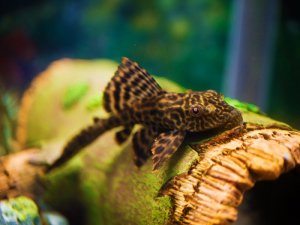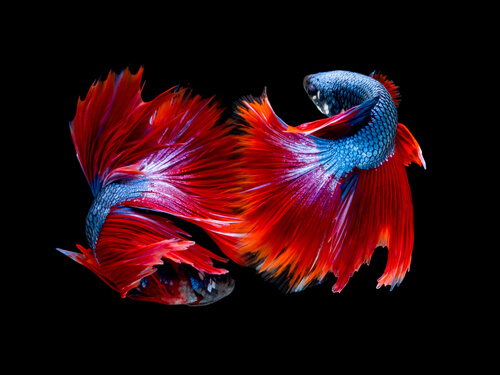
So, your bettas are finally starting to mature, and you think it’s time to get some fry in the tank? Lucky for you, we’ve got everything you need to know on how to mate a betta fish in your tank. Breeding bettas has many benefits, especially if you’re a keen aquarist that enjoys selling fish with distinct traits. In addition, their specific colors and fin shapes are trendy, so you will make a substantial side income with this fish species.
Before we dive into the details, let’s explain the viability of mating betta fish. Breeding bettas at home in your aquarium isn’t the easiest thing. You’ll need all the right equipment and parameters to create a stable environment for breeding. So, if you’re asking yourself, “how do betta fish, mate?” you’re also going to need to consider a few other things along the way.
How To Set Up An Ideal Tank For Betta Fish Mating
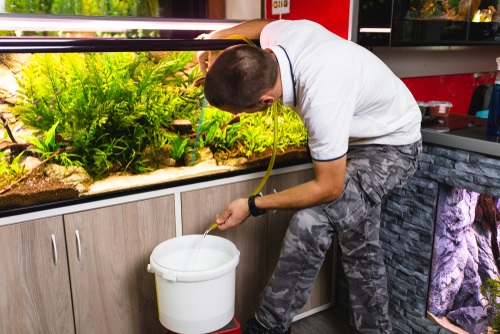
One of the first things you have to do with your bettas is creating a thriving environment. Males are usually kept separate from females to avoid stress and fighting for dominance. The females are typically held in groups known as sorority tanks. A minimum of four fish should be in one sorority tank. This is both for companionship and the water parameters of your tank.
A breeding tank is larger than the regular one. Bettas generally require a minimum of five gallons. However, if you’re planning to breed, the volume required is much higher, with 10 gallons being the ideal target.
This is done to house the bettas, provide enough room for the female to isolate, and keep the fry comfortable as they hatch. Also, add some plants for better scenery and hiding spots in case your female betta requires privacy.
The lighting in your tank should also be toned down for mating. It shouldn’t necessarily be dark but instead a bit dim. If you’ve got a filter, it is best to remove it for the mating period because filters have been known to destroy betta bubble nests. If you choose to have one, ensure it is not too powerful.
How Mating Works With Betta Fish
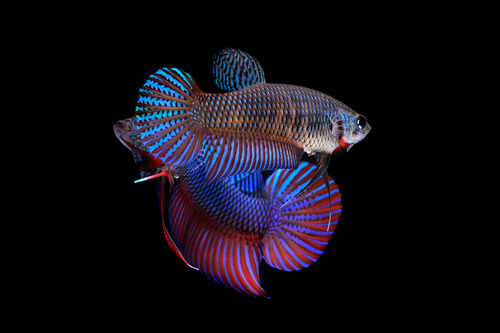
How do betta fish mate? Well, it depends mainly on which type of betta we are talking about. The bettas that are popularly recognized today are originally known as the Siamese fighting fish or betta splendens. Their appearance is quite distinct from bettas that are in tropical regions. The colorful looks and elegant fins result from quality breeding but knowing how to get them together for mating isn’t a walk in the park.
With bettas, the basics are still the same as other fish. They are essentially just like all other egg laying fish. The female has to lay eggs so the male can swim over and spray sperm for fertilization. However, bettas do this in their unique way, where a male usually comes over to the female and wraps himself around her to push out the eggs.
With their aggressive personalities, the male betta usually chases the female away before spraying his sperm onto her eggs.
How To Get Your Male And Female Betta Fish To Mate
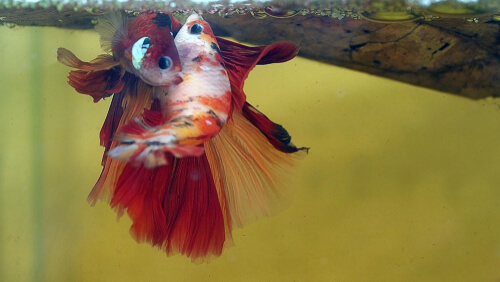
Having your bettas mate requires a fair bit of manipulation in your tank. First, the tank conditions need to be pristine. You don’t want to have the wrong parameters that hinder reproduction. Mating bettas is also highly dependent on the temperature and season.
Usually, mating season for bettas comes with a fair bit of aggression from the male, so your tank should have a divider before they interact with each other directly. However, while they get familiar with one another’s presence, your bettas can begin to display signs of readiness for mating.
For the female, you’ll notice vertical stripes starting to appear on her body, and she will also begin to shed eggs randomly. At this point, the male betta will also start to build a bubble nest.
Once the male and female seem to be acquainted, i.e., no aggressive movements or sudden changes in swimming direction, it’s time to remove the divider and see how things progress from there. Before that, prepare the tank for mating by adding some plants for hiding and privacy in case your female gets stressed around the male betta.
Once together, this is where your bettas will begin to engage in the actual mating process. Then, as explained earlier, the eggs are fertilized, and you can rest easy knowing that the first stage of getting fry is complete.
Fertilizing The Eggs And Caring For Betta Fry
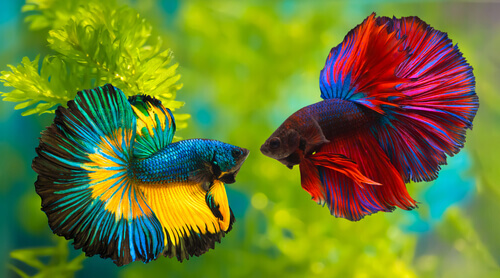
The male betta is responsible for ensuring that the fertilized eggs can develop. For this fish species, that means blowing air bubbles to create a nest at the tank’s surface. Once that is done, the male picks up the eggs in his mouth and carefully places them in the bubbles. This is called the betta fish bubble nest, and it is a crucial step to know about if you’re looking to learn how to mate a betta fish.
The nest’s primary purpose is to protect the eggs until the fish hatch. However, it also serves a crucial role for female bettas to judge whether or not her potential partner is the suitable mate. She does a careful inspection of the air bubble nest before making her decision. Fish romance is a bit puzzling, but you’ll have to accept it if you want baby bettas in your tank.
Betta eggs will hatch after 48 to 72 hours. After this period, you’ll notice the fry wiggling out of the eggs. The male has the privilege of caring for the fry for the first stages of their development. He will protect them and show them the ropes for navigating the world (or, in this case, the tank) as a fish. This includes putting them back in the nest once they drop out due to their lack of swimming abilities.
Male bettas don’t tend to stick too long with the caretaker role. After the fry shows independence, you’ll need to separate them. If left alone, the male parent might become aggressive towards the fry.
What To Do If Your Betta Fish Refuse To Mate
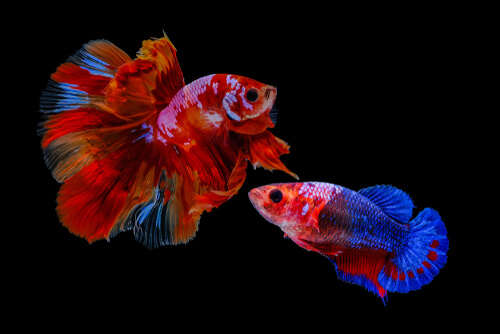
First, don’t be disappointed, as these occurrences can’t be prevented. While learning how to betta fish mate, you should familiarize yourself with the behavior of mating bettas and understand the behaviors that indicate disapproval from a female. When you release a female betta into the tank with the male, she should ideally swim to the bubble nest for a look.
If she approves, everything can proceed as explained above. If not, she will leave or destroy the nest. Once this happens, you should return the female to her side of the divider. Now, the male may begin to work on the nest once more, and you can attempt to breed them again. But if she shows signs of disapproval again, your current pair is not a match.
Caring For Young Fry
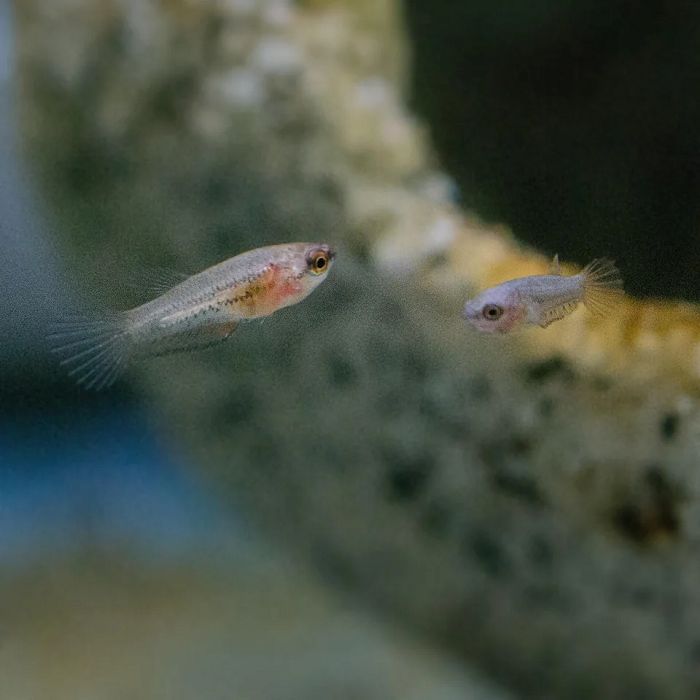
Now that you’ve got some baby bettas in your tank, it’s time to give them a bit of food to encourage growth. It would help if you chose highly nutritious meals. For instance, meals like vinegar eels and microworms are great.
Ensure there is enough food for the fry, but avoid overfeeding them because you will excrete more waste into your tank, which can lead to other complications. After two months, your fry will show signs of maturity, so you’ll need to separate them to avoid territorial behavior.
Bottom Line
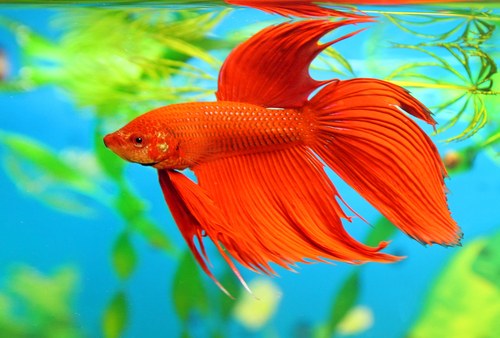
Finding the answer to “how do betta fish mate?” is the first step to a long process involving multiple differences. This fish species isn’t the easiest to understand but learning their behavior and working towards keeping them healthy is a reward in itself. With a little bit of practice, you should be able to create a happy tank with lots of betta fish fry!


